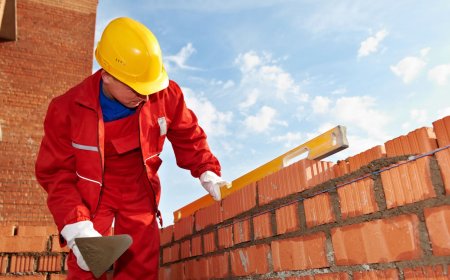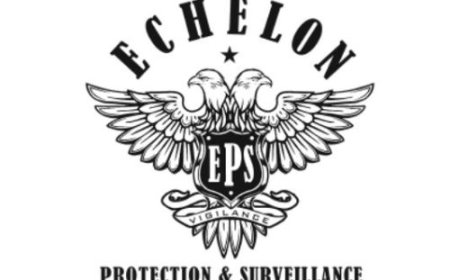Safe and Responsible Solutions for Bee Infestations

While bees are crucial to agriculture and ecosystems, their presence near homes, schools, or commercial buildings can sometimes pose serious risks. Bee infestations in walls, attics, or trees may lead to allergic reactions, structural damage, and general discomfort for people and pets. Managing this balance between environmental preservation and public safety requires thoughtful, professional intervention.
The Rise in Urban Bee Encounters
Urban and suburban development has disrupted many natural habitats, causing bees to seek alternative nesting sites in human structures. Warm attics, hollow walls, chimneys, and abandoned sheds offer ideal environments for colonies to settle and grow.
As awareness of bees ecological value increases, property owners are seeking humane ways to deal with infestationsways that remove immediate threats without destroying entire colonies. This is where professional removal services play an essential role.
The Risks of Living Near an Active Hive
Bee stings can be painful for anyone, but for people with allergies, even a single sting can result in anaphylaxis, a life-threatening condition. When a colony feels threatened, hundreds of bees may attack at once. Having a hive inside or near your property poses several dangers:
-
Allergic reactions and hospital visits
-
Increased sting incidents for children or pets
-
Wax and honey causing structural damage or mold
-
Buzzing sounds disrupting sleep or peace
-
Recurring infestations if not removed completely
If you suspect a hive is forming or already active, its vital to act quickly.
Signs You May Need Bee Removal
Identifying bee presence early helps prevent more serious complications later. Look out for:
-
Bees flying in and out of the same wall crack or roofline
-
Buzzing noises from inside walls or ceilings
-
Honey or dark stains seeping through drywall
-
Clusters of bees near chimneys, vents, or attic spaces
-
Piles of wax, pollen, or dead bees near windows or doors
Attempting to block or spray the hive yourself can make the bees aggressive, increasing the risk of multiple stings and incomplete removal.
Bee Removal Near Me
Bee removal near me services specialize in the safe, effective, and ethical extraction of bee colonies from residential, commercial, and public areas. These services typically include an on-site inspection, species identification, hive removal or relocation, sanitation, and future prevention. Many providers work with local beekeepers to relocate honeybee colonies to appropriate environments where they can continue pollinating safely.
Whether you are dealing with carpenter bees damaging wood, a swarm in your backyard tree, or honeybees nesting in your walls, certified bee removal professionals have the tools and training to handle the situation effectively.
How Professional Bee Removal Works
Step 1: Initial Inspection
Trained technicians visit your property to locate the hive and determine the type of bees present. This step is critical to ensure the correct treatment plan.
Step 2: Safe Removal or Relocation
-
For honeybees: Live relocation is prioritized. The colony is vacuumed or boxed with care and moved to an apiary.
-
For carpenter or bumblebees: Specific deterrents or physical removal may be used, depending on their location.
Step 3: Hive Extraction
After removing the bees, the hive structurewax, honey, eggs, and pheromonesis also cleared. Leaving remnants can attract other pests or new bee colonies.
Step 4: Sanitation and Repair
The affected area is cleaned, sanitized, and sealed. Damaged walls or ceilings may be repaired or referred to contractors.
Step 5: Preventive Sealing
All potential future access points are identified and sealed to ensure bees dont return.
Why Professional Removal Is Better Than DIY
DIY solutions such as bug sprays, smoke, or foam may kill a few bees but wont eliminate the queen or larval nest. Worse, they can provoke an aggressive swarm. Risks of DIY removal include:
-
Painful stings or hospitalization
-
Incomplete hive removal
-
Property damage from improper wall openings
-
Killing protected bee species illegally
-
Attracting pests like ants or rats to honey left behind
Hiring trained experts guarantees thorough and humane removal, aligned with local regulations and best practices.
What to Look for in a Bee Removal Company
When searching for a reliable service provider, prioritize these factors:
-
Experience in live bee relocation
-
Licensed and insured technicians
-
Partnerships with local beekeepers
-
Eco-friendly and humane practices
-
Emergency availability and warranty support
Ask whether the company will provide post-removal sealing and documentationimportant for property managers or business owners.
Bee Removal Costs and Considerations
Pricing for bee removal varies based on hive size, accessibility, and species. Heres a general idea:
-
Outdoor hives in trees or fences: $100$250
-
Interior wall or attic hives: $300$800 (includes removal and clean-up)
-
Emergency or same-day service: $100$200 extra
Some companies offer discounted rates for live honeybee relocations, especially if beekeepers are involved.
Legal Protections for Bees
In many areas, honeybees are protected by agricultural or environmental laws. Killing them may be illegal without a permit. Professional services ensure that removal complies with all local guidelines, preserving essential pollinators wherever possible.
Bees are too important to be exterminated indiscriminately. Thats why responsible pest control prioritizes relocation over elimination.
Aftercare and Prevention
Following bee removal, there are steps you can take to prevent future problems:
-
Seal entry points such as vents, cracks, or loose siding
-
Trim overhanging trees and remove dead wood
-
Avoid using strong perfumes or scents outdoors
-
Dont leave sugary drinks or garbage outside
-
Install bee boxes away from the house to attract bees to safe zones
Education is also keyunderstanding which bees are harmless can reduce fear and overreaction to natural bee activity in gardens or parks.
When to Call for Immediate Help
Contact a removal service immediately if:
-
A hive is forming inside your home or business
-
There is increased bee traffic around children or pets
-
You or someone nearby has a bee sting allergy
-
Theres a loud buzzing sound in walls or ceilings
-
The hive appears to grow in size rapidly
Dont delayquick intervention reduces risk and ensures better results.
Final Thoughts
Bees deserve respect and protection, but not at the cost of human safety. When infestations occur, especially inside structures or heavily trafficked areas, swift and professional bee removal is essential.
Ethical bee removal balances the need for public safety with the global importance of pollinator conservation. By choosing licensed experts who prioritize humane solutions, you can protect your property and do your part to preserve a vital part of our ecosystem.
Safe and Responsible Solutions for Bee Infestations
While bees are crucial to agriculture and ecosystems, their presence near homes, schools, or commercial buildings can sometimes pose serious risks. Bee infestations in walls, attics, or trees may lead to allergic reactions, structural damage, and general discomfort for people and pets. Managing this balance between environmental preservation and public safety requires thoughtful, professional intervention.
The Rise in Urban Bee Encounters
Urban and suburban development has disrupted many natural habitats, causing bees to seek alternative nesting sites in human structures. Warm attics, hollow walls, chimneys, and abandoned sheds offer ideal environments for colonies to settle and grow.
As awareness of bees ecological value increases, property owners are seeking humane ways to deal with infestationsways that remove immediate threats without destroying entire colonies. This is where professional removal services play an essential role.
The Risks of Living Near an Active Hive
Bee stings can be painful for anyone, but for people with allergies, even a single sting can result in anaphylaxis, a life-threatening condition. When a colony feels threatened, hundreds of bees may attack at once. Having a hive inside or near your property poses several dangers:
-
Allergic reactions and hospital visits
-
Increased sting incidents for children or pets
-
Wax and honey causing structural damage or mold
-
Buzzing sounds disrupting sleep or peace
-
Recurring infestations if not removed completely
If you suspect a hive is forming or already active, its vital to act quickly.
Signs You May Need Bee Removal
Identifying bee presence early helps prevent more serious complications later. Look out for:
-
Bees flying in and out of the same wall crack or roofline
-
Buzzing noises from inside walls or ceilings
-
Honey or dark stains seeping through drywall
-
Clusters of bees near chimneys, vents, or attic spaces
-
Piles of wax, pollen, or dead bees near windows or doors
Attempting to block or spray the hive yourself can make the bees aggressive, increasing the risk of multiple stings and incomplete removal.
Bee Removal Near Me
Bee removal near me services specialize in the safe, effective, and ethical extraction of bee colonies from residential, commercial, and public areas. These services typically include an on-site inspection, species identification, hive removal or relocation, sanitation, and future prevention. Many providers work with local beekeepers to relocate honeybee colonies to appropriate environments where they can continue pollinating safely.
Whether you are dealing with carpenter bees damaging wood, a swarm in your backyard tree, or honeybees nesting in your walls, certified bee removal professionals have the tools and training to handle the situation effectively.
How Professional Bee Removal Works
Step 1: Initial Inspection
Trained technicians visit your property to locate the hive and determine the type of bees present. This step is critical to ensure the correct treatment plan.
Step 2: Safe Removal or Relocation
-
For honeybees: Live relocation is prioritized. The colony is vacuumed or boxed with care and moved to an apiary.
-
For carpenter or bumblebees: Specific deterrents or physical removal may be used, depending on their location.
Step 3: Hive Extraction
After removing the bees, the hive structurewax, honey, eggs, and pheromonesis also cleared. Leaving remnants can attract other pests or new bee colonies.
Step 4: Sanitation and Repair
The affected area is cleaned, sanitized, and sealed. Damaged walls or ceilings may be repaired or referred to contractors.
Step 5: Preventive Sealing
All potential future access points are identified and sealed to ensure bees dont return.
Why Professional Removal Is Better Than DIY
DIY solutions such as bug sprays, smoke, or foam may kill a few bees but wont eliminate the queen or larval nest. Worse, they can provoke an aggressive swarm. Risks of DIY removal include:
-
Painful stings or hospitalization
-
Incomplete hive removal
-
Property damage from improper wall openings
-
Killing protected bee species illegally
-
Attracting pests like ants or rats to honey left behind
Hiring trained experts guarantees thorough and humane removal, aligned with local regulations and best practices.
What to Look for in a Bee Removal Company
When searching for a reliable service provider, prioritize these factors:
-
Experience in live bee relocation
-
Licensed and insured technicians
-
Partnerships with local beekeepers
-
Eco-friendly and humane practices
-
Emergency availability and warranty support
Ask whether the company will provide post-removal sealing and documentationimportant for property managers or business owners.
Bee Removal Costs and Considerations
Pricing for bee removal varies based on hive size, accessibility, and species. Heres a general idea:
-
Outdoor hives in trees or fences: $100$250
-
Interior wall or attic hives: $300$800 (includes removal and clean-up)
-
Emergency or same-day service: $100$200 extra
Some companies offer discounted rates for live honeybee relocations, especially if beekeepers are involved.
Legal Protections for Bees
In many areas, honeybees are protected by agricultural or environmental laws. Killing them may be illegal without a permit. Professional services ensure that removal complies with all local guidelines, preserving essential pollinators wherever possible.
Bees are too important to be exterminated indiscriminately. Thats why responsible pest control prioritizes relocation over elimination.
Aftercare and Prevention
Following bee removal, there are steps you can take to prevent future problems:
-
Seal entry points such as vents, cracks, or loose siding
-
Trim overhanging trees and remove dead wood
-
Avoid using strong perfumes or scents outdoors
-
Dont leave sugary drinks or garbage outside
-
Install bee boxes away from the house to attract bees to safe zones
Education is also keyunderstanding which bees are harmless can reduce fear and overreaction to natural bee activity in gardens or parks.
When to Call for Immediate Help
Contact a removal service immediately if:
-
A hive is forming inside your home or business
-
There is increased bee traffic around children or pets
-
You or someone nearby has a bee sting allergy
-
Theres a loud buzzing sound in walls or ceilings
-
The hive appears to grow in size rapidly
Dont delayquick intervention reduces risk and ensures better results.
Final Thoughts
Bees deserve respect and protection, but not at the cost of human safety. When infestations occur, especially inside structures or heavily trafficked areas, swift and professional bee removal is essential.
Ethical bee removal balances the need for public safety with the global importance of pollinator conservation. By choosing licensed experts who prioritize humane solutions, you can protect your property and do your part to preserve a vital part of our ecosystem.







































